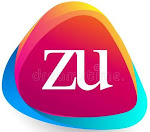The UGC NET Computer Science (Computer Graphics)
Introduction
In this article, you will know and learn about some important terminologies, and MCQs frequently
asked in the UGC NET Computer Science
(Computer Graphics).
Graphics
· The first computer
Graphics design system was developed by Evan Sutherland.
· Graphics are
visual images or designs on some surface, such as a wall, canvas screen, paper, or stone, to inform, illustrate or entertain.
· The seven basic elements
of Graphics design are line, shape, color, texture type, space, and image.
· Different types
of Graphics design are web design, UI and interactive design, advertising and
marketing design, motion Graphics and animations, packaging design, game
design, illustration, publication, and typographic design.
· Graphics
include maps, photographs, designs and patterns, family trees, diagrams,
architectural or engineering blueprints, bar charts and pie charts, typography,
schematics, line art, and flowcharts.
· Graphics packages
are used to create letterheads, and images, enable us to produce
simple logos, provide several tools for drawing shapes and complex
drawings, and are used to produce cover pages for magazines, newspapers, and journals.
· Computer Graphics makes something look good, it organizes information to help deliver a message in the most impactful way possible.
Computer Graphics
· Computer Graphics
is a core technology in digital photography, film, video games, digital art, cell
phones, and computer displays.
· Computer Graphics
deals with generating images and art with the aid of computers.
· The areas in
which Computer Graphics is used include cartography, visualization of computer
simulations, medical diagnostics, drafting and computer design, preparation of
publications, special effects in movies, and computer games.
· Computer Graphics
are used for creating and developing videos and computer programs, science
modeling, catalog design, and commercial art.
· Computer Graphics
elements include animation, interaction, rendering, and modeling.
· Some common
examples of Computer Graphics are Logo, Corel Draw, Autocad, 3-D Studio, Core,
GKS (Graphics Kernel System), PHIGS, and CAM (Computer Graphics Metafile).
· Two different
categories of Computer Graphics are Raster Graphics and vector Graphics.
Advantages of Computer Graphics
Some Advantages of Computer Graphics are:
- Improving the realism of visual content
- Enabling the creation of 3-D models and animations
- Improving the accessibility of visual content
Random scan
· Random-scan systems
or monitors are also known as vector displays, stroke-writing displays, or
calligraphic displays.
· Random scan is a technique
in which the display is constructed through an electron beam, which is directed
only to the specific areas of the screen where the image is to be sketched or
drawn.
· The resolution of
the random scan display is high, and it delivers smooth image drawing.
· Random scan
system requires less memory.
· Random scan has a lower refresh rate of about 30 to 60 times per second.
· Random scan
system uses a mathematical function for an image or picture rendering.
· Random scan system
is suitable for applications requiring polygon drawings.
· A common example
of a random scan is a pen plotter.
· CRT is a Random
scan monitor that uses electron beams.
Raster
scan
· Raster scan has a higher refresh rate about 60 to 80 times per second.
· Raster scan uses
pixels.
· Raster scan is
suitable for creating realistic scenes.





No comments:
Post a Comment